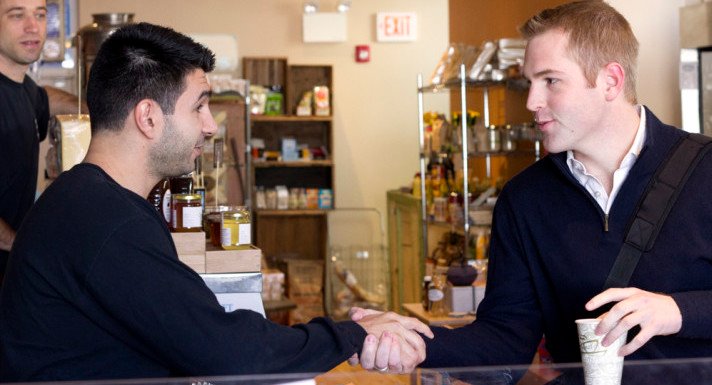Since a study by Bain & Company in 1990 showed that “across the range of industries, increasing customer retention by as little as 5% could result in long-run profit increases between 25% and 95%,” managements have been trying to tackle customer loyalty in different ways to ensure that their customers keep coming back. A more recent approach to this matter – aside from the marketing strategies – is a renewed focus on employee engagement and customer satisfaction.
Why Boost Employee Engagement?
Frontline employees are the face of your brand. Best-selling author and Forbes columnist Kevin Kruse defines Employee Engagement as
“The emotional commitment an employee has to the organization and its goals. This emotional commitment means engaged employees actually care about their work and their company. They don’t work just for a paycheck, or just for the next promotion, but work on behalf of the organization’s goals.”
So what’s the logic behind boosting employee engagement, which will build up good service relationships with their customers? If we compare studies, we find that most customers only become profitable with time because they will spend more and more money with your company over time.
Losing Employees and Customers Gets Expensive
According to Fred Reichelt’s “The Loyalty Effect” losing just one out of every 20 customers can deplete your profits by over 30% over time. The number one reason why customers choose to stop doing business with a company is because of poor customer service, so it’s crucial to stop losing employees.
The Center for American Progress found that the cost of replacing an employee is between 16 and 22 percent of their annual salary, and in cases where the employee is highly educated with a specialized skill set, it can cost up to 213% of his salary. Since the loss of a good employee can also mean the loss of good customers, it only makes sense to invest in employee engagement.
Employee engagement only helps to improve the individual employee’s productivity, it will also increase the entire group’s service quality, since they can learn from each other.
Success Story: Teddy the Concierge
In a recently published newsletter for partners and management, hotel conglomerate FRHI (the union of the three luxury hotel brand Fairmont, Raffles and Swissôtel) praised the success of their new employee engagement solution, based on online communication, which allows employees of the chain’s three brands to share their experiences and know-how through an online platform.
In this particular case they showed the example of Concierge Teddy, who had his 30-year anniversary with the Fairmont Winnipeg and was celebrating with regular guest Matthew, who had previously been the hotel’s guest. Matthew has been returning to the hotel for the past 30 years, mainly because of his great relationship with Teddy. FRHI reported that following this post many colleagues congratulated Teddy and requested tips from him, on how they too could build stronger relationships with their customers.
Also if you have your employees building real relationships with your customers, you can ask the customers easily for feedback, which is more effective than relying on customer feedback cards or online surveys according to Patrick M. Wheeler, Managing Director at Managing Contract Services,
“Information gathered from a customer at or immediately after an event is 40 % more accurate than info gathered 24 hours later. Response rates increase 10% to 12% simply by requesting feedback while the event is happening.”
When you’re dealing with people, communication is at the core of each interaction. Happy and engaged employees lead to satisfied, loyal customers.
Learn how Beekeeper can connect your entire organization and improve guest satisfaction scores. Request a free demo below!

About the author
Beekeeper
Interested in learning more?
Join 1200+ companies transforming frontline work with Beekeeper. Start your journey today to make every task easier, every team stronger, and every shift smoother.







